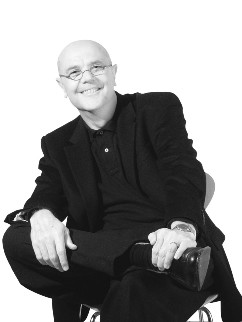Ronald Hicks is principal and head of health and research at Rice Daubney and recently led the $560 million stage 2.1 of the Liverpool Hospital masterplan and redevelopment.
With extensive experience in the design of clinical environments, his experience also extends to residential, hospitality and community-based projects.
A&D spoke to Hicks about growing up in South Africa, the challenges of the Liverpool project and what he loves and hates about architecture.
You have worked in health care design for over 25 years in Australia and overseas. In your experience, how do Australia’s design solutions differ from those overseas?
There are obvious differences which relate to funding profiles, clinical care models and contextual issues. The reality though is that Australian architects are strongly influenced by international world’s best practice trends. Whilst being informed and remaining current is critical, this should not detract from a really strong drive to produce a specific contextual response to our needs in both a clinical and architectural sense.
Particularly some of the very large major state facilities developed recently in Australia have seen design outcomes very strongly influenced by European and American planning models. I think this is a pity, and this has certainly become a real consideration for me. We need to focus more on the specifics and engage with issues of context more thoroughly. This will inevitably see a more appropriate and therefore responsive built outcome in our facilities.

What do you think has been the biggest change in health care design in the past two years?
There has been a positive shift towards and greater recognition of the issue of ‘hospital as place’. There is an increased emphasis on the concept of patient-focused care and the recognition that the quality of the created environment has a significant impact on clinical outcomes and the overall quality of healthcare.
You grew up in South Africa. How do you think this shaped how you approach architecture?
I believe Africa has a strong sense of place. It is a powerful landscape and this is inevitably absorbed into one’s thinking. The issue of context is therefore critical to me. I am also strongly focused on materiality and drawn to natural, earth-bound colours, textures and materials.
I have always believed that sociopolitical tensions often contribute to the existence of a very creative milieu — in all forms of art. Certainly my continued attraction to contemporary African art, which is often reflective of this energy, has remained with me whilst I have developed a love of the Australian landscape.
You have been involved with heritage and conservation work in South Africa. Can you tell A&D about what type of work you are doing there?
Unfortunately there is limited public funding being invested into the preservation of the heritage building fabric. Within my practice I was lucky enough to complete a number of conservation-related projects in both the health and educational sectors for private sector clients. This included an adaptive reuse and remodeling of an early 1900s institutional building for use as a specialist psychiatric hospital.
Probably one of the most rewarding developments was the reconstruction of a large 1890s schoolhouse at Kingswood College in Grahamstown in the Eastern Cape. This beautiful old structure was completely destroyed by fire in the late 1990s. We were commissioned to reconstruct the entire building and to extend elements in response to new accommodation needs.
How is the country’s architecture different from Australia’s? Is their approach to building and designing different?
One hundred years ago there would have been remarkable similarities in the fabric of the built environment. Both countries share a strong architectural heritage from the United Kingdom and Europe. Whilst the early Dutch architecture is very specific, the Victorian influence in the development of regional settlements is very similar to the country towns of Australia.
Today the universities place a strong emphasis on design, and contemporary architects in both countries would have many parallels. Whilst the built outcomes will inevitably reflect the very different economies or technologies, the quality of design will compare favourably. My impression of the good new work being produced is that designers are more engaged and comfortable within their African context than previously.
You have been involved with the Liverpool Hospital redevelopment. What was the hardest challenge of the project and what was your solution?
I think the biggest design challenge related to the requirement to reorder the way the overall campus functioned. We developed the concept of the hospital concourse as a planning device to redefine the manner in which the overall campus functions. This new order will integrate with the existing clinical functionality but will also define subsequent developments on the campus. The real issue though is that it is a very positive architectural space — a space which will allow for diverse use and amenity.
Which part of the design process do you love the most and which part do you hate the most?
Working in health is a challenging task requiring enormous commitment. To me, producing a positive functional architectural response and creating a place that provides the appropriate environment for all users, as well as the highly technical, demanding clinical environment is a fascinating challenge.
I do have a specific interest in cancer care facilities and have immensely enjoyed the extensive research and work I have done in this field. In terms of frustrations, I do not enjoy the political battles which seem to pervade a great many health care projects.
Dealing with the disconnect between political funding decisions and real clinical needs can be an enormous challenge.

